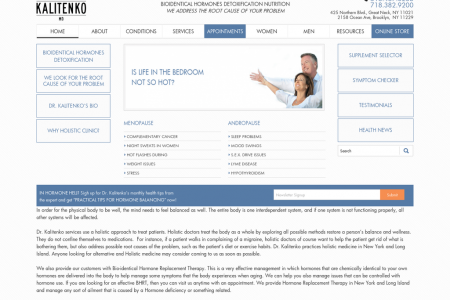
The Future of Medicine is Regenerative?
The Future OF MEDICINE IS REGENERATIVE? Regenerative medicine's main aim is to restore the function of diseased or damaged tissues or organs using a variety of approaches. From cell-based therapies through tissue engineering to developing new medical devices, regenerative medicine offers potentially huge benefits, but also faces and poses regulatory challenges. WHY IS IT USED? Patients suffering from chronic and debilitating illnesses are currently faced with a relatively short list of options: MEDICAL DEVICES (PACEMAKERS) LONG TERM ORGAN TRANSPLANT DRUG THERAPY BRIEF HISTORY OF REGENERATIVE MEDICINE 1901 - Different Blood Types Discovered Karl Landsteiner discovers different blood types and introduces the system to classify blood into A, B, AB, and O groups. 1954 - First Bone Marrow Transplant The first bone marrow transplant took Thanks place in 1954, to treat a young boy Brother! suffering from leukemia. A key issue with this type of medicine is to prevent the patient's immune system from rejecting the regenerative tissue. In the 1956 transplant, doctors got round this ...Don't mention it problem by using bone marrow from the patient's identical twin. 1957 - Artifical Cell Invented In 1957, Tomas Chang invented the world's first artificial cell. Working with improvised materials, Chang managed to create a permeable plastic sack that would effectively carry haemoglobin almost as effectively as a natural blood cell. 1967 - First Heart Transplant On December 3, 1967, Christiaan Barnard operated on 53 year old Lewis Washkansky, who received the first human heart transplant at Groote Schuur Hospital in Cape Town, South Africa. 1970 - Tissue Matching 2013 - Today Regenerative medicine aims to restore the function of tissues and organs by a variety of approaches. This vastly helps patients in the recovery process, especially By the late 1960s and early 1970s, scientists from tissue or organ were able to match donor tissues to patients by damage. tissue typing. This meant that tissues could be sourced from matched donors who were not necessarily related to the patient. DIFFERENT TYPES OF REGEN MEDS CELL THERAPIES As the fertilized egg develops it forms Embryonic stem (ES) cells. As the cells develop they differentiate into more specialized cell types and organize into structures that will Each of the 200 plus cell types in the human body has been derived from a single cell: the fertilized egg. become tissues and organs. THERAPY USING CELLS FROM A MATCHED DONOR This is called an "allogeneic" therapy. Examples include using cells from matched donors. The London Project to Cure Blindness from June 2007 aimed to THERAPY USING develop a cure for age-related eye-sight degeneration using matched donors. This approach may pose more A PATIENT'Ss OWN CELLS This is called an "autologous" therapy. Different aspects to this therapy are still subject to on-going tests at two London hospitals, which treat 100 heart attack patients with stem cells from their own bone marrow to help to repair damaged heart concerns as they have the potential to cause immune rejection and may be given to multiple people. tissue. Initial results from such studies are encouraging. TISSUE ENGENEERING Tissue engineering involves modifying cells or tissues in some way so that they can repair, GENE THERAPY regenerate or replace tissue in the body. Perhaps the best known example of such an approach was the tissue engineered section of windpipe made for a patient whose airways had can be treated by a specific protein, and then to deliver been severely damaged by tuberculosis. There are different approaches to gene therapy, the most obvious is to identify a medical condition that the gene coding for that protein to the affected cells. STORIES OF REGEN MEDS 1. STEM CELLS AND CIRRHOSIS Researchers in London used stem cells to treat patients with cirrhosis of the liver. They recruited nine patients with severe alcoholic liver cirrhosis. Each patient received an injection of his or her treated cells back into the main artery serving the liver. All patients tolerated the procedure well, and seven had significant improvements in the liver. 2. AGE-RELATED MACULAR DEGENERATION AMD is a common cause of poor vision among people aged 60 plus. It is caused by damage to cells in the macula. The macula is responsible for central vision, which is key to activities such as reading and writing. Researchers have found that embryonic stem (ES) cells can be used to derive RPE cells. Animal experiments have shown that RPE cells can restore visual response when injected into mutant mice lacking functional photoreceptors. ..I can see ! 3. CLAUDIA'S TRACHEA In March 2008, 30 year old Claudia was admitted to hospital suffering from collapsed airways. Her doctors offered to try and engineer a new section of trachea. Scientists then prepared for the operation by taking a section of trachea from a donor and removing all of the living cells. Two types of different cells were used to line structure in order to make it compatible with the patient. The operation was a success. RESEARCH IS IMPORTANT IMPORTING AND EXPORTING the importing and exporting of cells is the actual medical process of making change to a patient's life improving and streamlining this process is vital for the success of PROCURING developing regenerative medicine is regenerative medicine. HANDLE WITH CARE a lengthy process, one that needs an extreme amount of care. SAFETY ORT maintaining the safety of Regenerative medicine TESTING has the upmost of importance. The patient comes first. keeping regerative medicine at the pinnacle of engineering requires a laborious amount of testing. The results however are worth every second. WORLDWIDE FUNDING GERMANY - £7.7 MILLION IRELAND - £19 MILLIION U.K - £25 MILLÍON BRAZIL - £30 MILLION CANADA - E36 MILLION AUSTRALIA - £100 MILLION U.S.A - £250 MILLION CHINA - E1 BILLION REGENERATIVE MEDICINE Could well be the Future SOURCE: HTTP://EDUGREE.COM/ SOURCE: HTTP://www.PARLIAMENT.UK/DOCUMENTS/POST/POSTPN333.PDF SOURCE: HTTP:HTTP://www.CIRM.CA.GOV/COLLABORATIVE_FUNDING SOURCE: HTTP://www.THEAUSTRALIAN.COM.AU/NEWS/HEALTH-SCIENCE/STEM-CELL SOURCE: HTTP://www.MRC.AC.UK/FUNDINGOPPORTUNITIES/CALLS/UKRMP/MRCO08535 SOURCE: HTTP://www.AFIRMWAKEPITT.ORG/ABOUT-US/FUNDING-FOR-AFIRM.HTM SOURCE: HTTP://www.NUIGALWAY.IE/ABOUT-US/NEWS-AND-EVENTS SOURCE: HTTP://www.PRWEB.COM/RELEASES/REGENERATIVE_MEDICINE SOURCE: HTTP://www.STEMCELLSPORTAL.COM/NEWS-AND-PRESS :0
The Future of Medicine is Regenerative?
Source
http://thebe...e-medicineCategory
HealthGet a Quote











